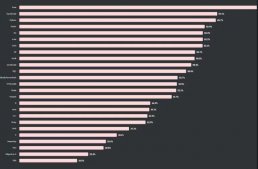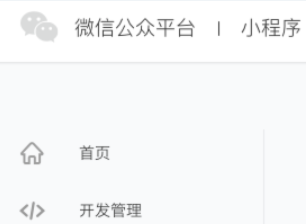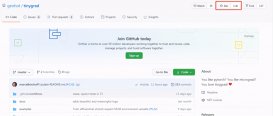rollup在业务中基本很少会有接触到,通常在我们的业务中大部分接触的脚手架,或者自己搭建项目中,我们都是用webpack,无论是vue-cli,还是react-create-app他们都是基于webpack二次封装的脚手架,所以我们对rollup更陌生一点,本文是一篇关于rollup的学习笔记,希望看完在项目中有所思考和帮助。
在开始本文前,主要会从以下几点去认识了解rollup。
1、基础了解rollup打包不同模式,以及如何打包成不同模式的js。
2、以一个实际的例子,将工具库用rollup与gulp实现任务流打包,验证打包后的js是否ok,加深对rollup的使用。
npm 初始化一个基础的package.json。
npm init -y
局部安装rollup。
npm i rollup
然后在当前目录下创建一个index.js。
在index.js中写入一点测试代码。
import b from './js/b.js' // const a = require('./js/a.js'); const getName = () => { // console.log('hello', a.name); console.log('hello', b.name); }; getName();
npx运行局部命令
当你在当前项目安装rollup后,就可以用命令行npx执行rollup打包输出对应模式的bundle.js
// 将index.js打包输出成bundle.iife文件,iife模式 npx rollup index.js --file bundle-iife.js --format iife // 将index.js打包输出成cjs模式 npx rollup index.js --file bundle-cjs.js --format cjs // 将index.js打包输出成umd模式 npx rollup index.js --file bundle-umd.js --format umd // es npx rollup index.js --file bundle-es.js --format es
es打包后的代码是这样的,不过此时es6还未为编译成es5。
const name = 'Maic'; const age = 18; var b = { name, age }; // const a = require('./js/a.js'); const getName = () => { // console.log('hello', a.name); console.log('hello', b.name); }; getName();
打包前的代码。
// const a = require('./js/a.js'); import b from './js/b.js' const getName = () => { // console.log('hello', a.name); console.log('hello', b.name); } getName();
命令行可以输出对应文件,我们也可以用配置文件方式,因此你可以像webpack一样新建一个rollup.config.js这样的配置,内容也非常简单。
export default { input: 'index.js', // 入口文件 output: { format: 'cjs', // cjs file: 'bundle.js' // 打包输出后文件名 }, }
当我们指定配置文件时,package.json的 type要指定成module,当node版本大于13时,默认是以ES Module方式,所以要给了提示,要么在package.json文件中加入type: module,要么把配置文件的后缀名改成rollup.config.mjs。
"type": "module", "scripts": { "build": "rollup -c rollup.config.js" },
Warning: To load an ES module, set "type": "module" in the package.json or use the .mjs extension. (Use `node --trace-warnings ...` to show where the warning was created) [!] RollupError: Node tried to load your configuration file as CommonJS even though it is likely an ES module. To resolve this, change the extension of your configuration to ".mjs", set "type": "module" in your package.json file or pass the "--bundleConfigAsCjs" flag.
es6转换成es5
在上面的例子中我们代码里有使用es6,但是打包后仍未转译,es6转es5主要依赖以下几个关键插件rollup-plugin-babel,@babel/preset-env,@babel/core插件。
在根目录下新建一个.babelrc.json,并依次安装npm i rollup-plugin-babel @babel/preset-env @babel/core --save-dev。
{ "presets": [ ["@babel/env", {"modules": false}] ] }
在rollup.config.js中。
import commonjs from '@rollup/plugin-commonjs';
import babel from 'rollup-plugin-babel';
export default [
{
input: 'index.js',
output: {
format: 'cjs',
file: 'bundle_cjs.js'
},
plugins: [commonjs(), babel({
exclude: ['node_modules/**']
})]
},
]
这样配置后,es6就可以成功编译成es5了。
我们发现还有@rollup/plugin-commonjs插件,这个插件主要是编译cjs。
如果你的代码使用的是cjs,未编译前。
// import b from './js/b.js' const a = require('./js/a.js'); const getName = () => { console.log('hello', a.name); // console.log('hello', b.name); }; getName();
编译打包后;
'use strict'; var _01 = {}; var name = 'Web技术学苑'; var age = 18; var a$1 = { name: name, age: age }; var a = a$1; var getName = function getName() { console.log('hello', a.name); }; getName(); module.exports = _01;
rollup默认就是esModule方式,所以你会看到你配置的输出文件都是export default方式输出的。
当我们简单的了解一些rollup的知识后,我们尝试打包一个我们自己写的工具库试一试。
rollup打包一个工具库
在很早之前写过一篇关于webpack打包工具库,可以参考这篇文章webpack5构建一个通用的组件库,今天用rollup实现一个webpack5打包一样的功能,对应文章源码参考nice_utils。
准备基础库
首先我们把nice_utils[1]仓库下拷贝出src目录。
目录大概就是下面这样。
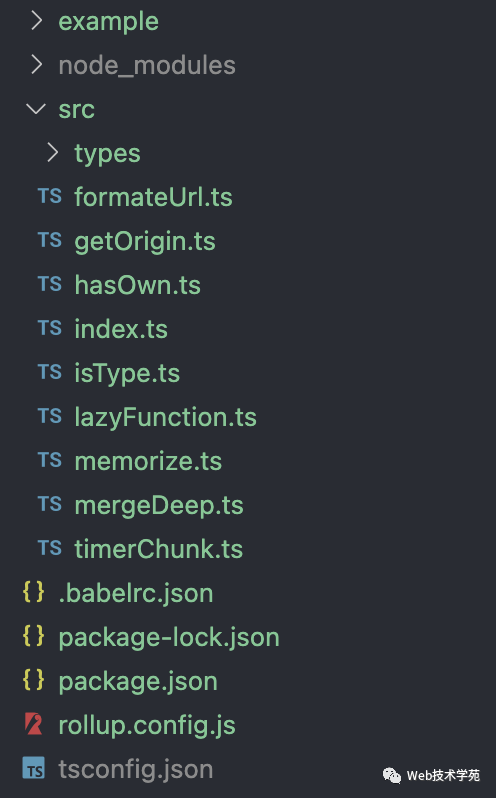
因为项目是支持ts的所以也需要安装typescript。
执行以下命令,然后初始化tsconfig.json。
npm i typescript --save-dev npx tsc --init
npx tsc --init主要是默认生成ts配置文件。
{ "compilerOptions": { "baseUrl": ".", "outDir": "dist", "sourceMap": true, "target": "es5", "module": "ESNext", "moduleResolution": "node", "newLine": "LF", "strict": true, "allowJs": true, "noImplicitAny": false, "noImplicitThis": false, "noUnusedLocals": true, "experimentalDecorators": true, "resolveJsonModule": true, "esModuleInterop": true, "removeComments": false, "jsx": "preserve", "lib": ["esnext", "dom", "dom.iterable"], }, }
这里注意一点lib配置需要加上dom.iterable,不加这个会打包编译报错,因为我们的工具函数里有用到entries迭代器,所以lib上需要加上这个,默认生成的配置会比较多,关键的几个,特别注意lib,target,jsx即可。
rollup.config.js
在根目录下新建rollup.config.js。
import path, { dirname } from 'path'; import { fileURLToPath } from 'url' import commonjs from '@rollup/plugin-commonjs'; import babel from 'rollup-plugin-babel'; import alias from '@rollup/plugin-alias'; import ts from 'rollup-plugin-typescript2'; const resolve = (p) => { return path.resolve(dirname(fileURLToPath(import.meta.url)), p) }; const builds = { 'runtime-cjs-prod': { entry: resolve('src/index.ts'), dest: name => `dist/${name}.js`, format: 'cjs', env: 'production', external: [] }, 'runtime-esm-prd': { entry: resolve('src/index.ts'), dest: name => `dist/${name}.js`, format: 'esm', env: 'production', external: [] }, 'runtime-umd-prd': { entry: resolve('src/index.ts'), dest: name => `dist/${name}.js`, format: 'umd', env: 'production', external: [] } } const getConfig = (name) => { const opts = builds[name]; const config = { input: opts.entry, external: opts.external, plugins: [ commonjs(), babel(), // 设置全局路径别名 alias({ entries: { 'src': resolve('src'), } }), ts({ tsconfig: resolve('./tsconfig.json') }) ].concat(opts.plugins, []), output: { file: opts.dest(name), format: opts.format, name: opts.name || 'Nice_utils', } } return config; } export default Object.keys(builds).map(getConfig)
以上一段代码看似好长,但实际上输出的就是一个数组配置,本质上就是输出。
export default [ { input: '', dest: '', format: 'cjs', env: 'production', external: [] } ... ]
我们注意到resolve这个方法有些特殊,主要是获取路径,我们以前可能不会这么做,我们会path.resove(__dirname, p),因为此时rollup是默认ESModule所以,__dirname就会报错,__dirname只有在cjs中才可以正确使用,所以这里只是换了一种方式,但实际上的作用并没有发生变化。
import path, { dirname } from 'path'; import { fileURLToPath } from 'url' const resolve = (p) => { return path.resolve(dirname(fileURLToPath(import.meta.url)), p) }; const builds = { 'runtime-cjs-prod': { entry: resolve('src/index.ts'), dest: name => `dist/${name}.js`, format: 'cjs', env: 'production', external: [] }, ... }
最后我们在package.json中配置打包命令。
{ "name": "02", "version": "1.0.0", "description": "", "main": "index.js", "type": "module", "scripts": { "test": "echo \"Error: no test specified\" && exit 1", "build": "rollup -c rollup.config.js" }, "keywords": [], "author": "", "license": "ISC", "devDependencies": { "@babel/core": "^7.19.6", "@babel/preset-env": "^7.19.4", "@rollup/plugin-alias": "^4.0.2", "@rollup/plugin-commonjs": "^23.0.2", "@types/node": "^18.11.6", "rollup": "^3.2.3", "rollup-plugin-babel": "^4.4.0", "rollup-plugin-typescript2": "^0.34.1", "typescript": "^4.8.4" } }
顺带我们看下,我们使用到的一些插件,注意@types/node必须要安装,不安装就会提示需要安装此插件。

并且我们看到了es6转es5所需要的@babel/core,@babel/preset-env以及rollup-plugin-babel,还有@rollup/plugin-commonjs,这个插件会将内部模块中如果有用到cjs会给我们转译成es6,因为在浏览器是不识别require这样的关键字的。
当我们运行npm run build时。
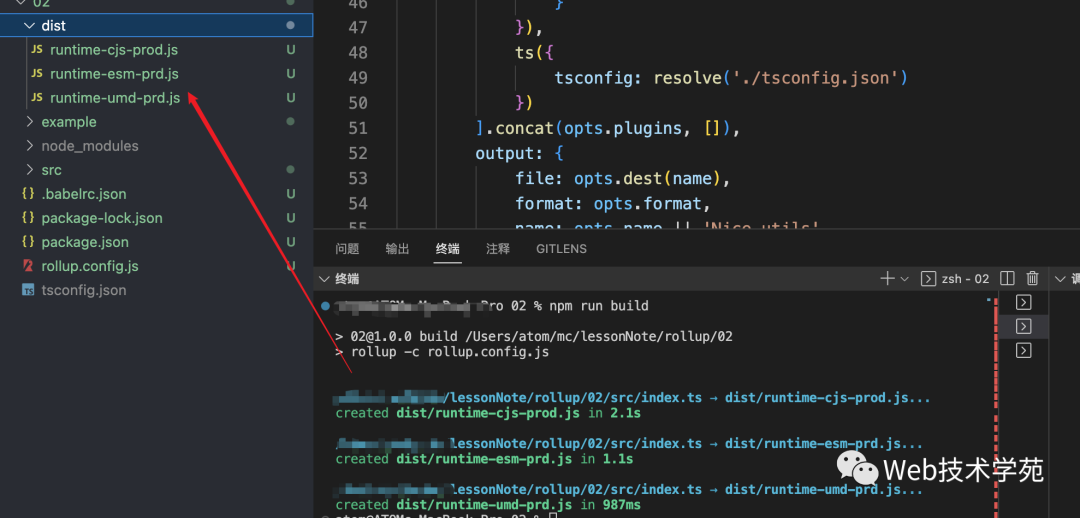
测试打包后的js
我们新建了一个example文件,在该目录下新建一个index.html。
DOCTYPE html> <html lang="en"> <head> <meta charset="UTF-8" /> <meta http-equiv="X-UA-Compatible" content="IE=edge" /> <meta name="viewport" content="width=device-width, initial-scale=1.0" /> <title>exampletitle> head> <body> <div id="app">div> <script src="../dist/runtime-umd-prd.js">script> body> html>
我们需要借助一个类似webpack-dev-server的第三方插件才行,这里我们结合gulp与browser-sync两个插件。
我们新建一个gulpfile.js文件。
// gulpfile.js import browserSync from 'browser-sync'; import gulp from 'gulp'; import { rollup } from 'rollup'; import { builds, getConfig } from './config.js'; const buildTask = (keyName) => { gulp.task('build', () => { const { input, output, plugins } = getConfig(keyName); return rollup({ input, plugins }) .then(bundle => { return bundle.write({ ...output, sourcemap: true }); }); }); } const devServer = () => { const server = browserSync.create(); const defaultOption = { port: '8081', //设置端口 open: true, // 自动打开浏览器 files: `src/*`, // 当dist文件下有改动时,会自动刷新页面 server: { baseDir: '.' // 基于当前根目录 }, serveStatic: ['.', './example'], } gulp.task('server', () => { server.init(defaultOption) }) } const start = async () => { const keyName = Object.keys(builds)[2]; // 输出umd模式 await buildTask(keyName); await devServer(); } start();
我们所用到的就是gulp,并结合rollup打包我们的仓库代码。
在引入的config.js主要是把之前的相关配置提了出去。
// config.js import path, { dirname } from 'path'; import { fileURLToPath } from 'url' import commonjs from '@rollup/plugin-commonjs'; import babel from 'rollup-plugin-babel'; import alias from '@rollup/plugin-alias'; import ts from 'rollup-plugin-typescript2'; export const resolve = (p) => { return path.resolve(dirname(fileURLToPath(import.meta.url)), p) }; export const builds = { 'runtime-cjs-prod': { entry: resolve('src/index.ts'), dest: name => `dist/${name}.js`, format: 'cjs', env: 'production', external: [], plugins: [] }, 'runtime-esm-prd': { entry: resolve('src/index.ts'), dest: name => `dist/${name}.js`, format: 'esm', env: 'production', external: [], plugins: [] }, 'runtime-umd-prd': { entry: resolve('src/index.ts'), dest: name => `dist/${name}.js`, format: 'umd', env: 'production', external: [], plugins: [] } } export const getConfig = (name) => { const opts = builds[name]; const config = { input: opts.entry, external: opts.external, plugins: [ commonjs(), babel(), // 设置全局路径别名 alias({ entries: { 'src': resolve('src'), } }), ts({ tsconfig: resolve('./tsconfig.json') }) ].concat(opts.plugins, []), output: { file: opts.dest(name), format: opts.format, name: opts.name || 'Nice_utils', } } return config; }
最后我们在package.json添加运行命令。
"scripts": { "test": "echo \"Error: no test specified\" && exit 1", "build": "rollup -c rollup.config.js", "server": "gulp build && gulp server" },
注意我们server实际上有两个任务,所以必须要依次执行两个任务才行。
当我们运行npm run server时,就会打包,并同时打开浏览器。

OK了,证明我们打包后的js就生效了。
总结
了解rollup[2]的基础使用,对于工具库来说,rollup打包比起webpack配置要简单得多,但是远远没有webpack的生态强大,两者比较使用起来rollup比webpack要简单得多,我们也可以参考学习vue2[3]源码,vue2源码是如何通过rollup打包的。
以一个简单的例子结合gulp配和rollup打包对应不同模式的js,从而加深对rollup的理解。
本文示例code example[4]。
参考资料
[1]nice_utils: https://github.com/maicFir/nice_utils
[2]rollup: https://rollupjs.org/guide/en/
[3]vue2: https://github.com/vuejs/vue
[4]code example: https://github.com/maicFir/lessonNote/tree/master/rollup/02
原文地址:https://mp.weixin.qq.com/s/JmGRUsWGy9JwTAb7eA7K0A


